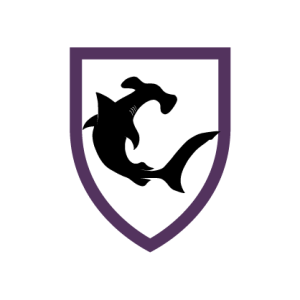The mission of the UAB Heersink School of Medicine Learning Communities Program is to cultivate a supportive and welcoming community that fosters professional identity formation.
We seek to accomplish our mission through developing longitudinal relationships that include faculty and peer mentorship, coaching, sessions, socials, and events such as the Learning Communities Olympics.
Students are assigned to an LC based on their clinical campus assignments and stay with the same community throughout their four years of medical school.
Each LC, led by a faculty mentor responsible for the curriculum, meets monthly in small groups to discuss wellness and professional development, and along with important topics like health disparities, ethics, interprofessional teamwork, and community engagement. Each full LC also meets regularly for optional social events for peer mentoring.
The communities are named for prominent leaders from the school’s past and present.
Our Learning Communities

Barfield-Carter
Campus: Birmingham
Faculty mentor: Desiree Morgan, MD, Department of Radiology
Named for: Melson Barfield-Carter, MD. In 1945, Dr. Barfield-Carter became the first female faculty member in the School of Medicine and was first woman to be named a department chair (of the Department of Radiology). She also was the first woman to graduate from Tulane Medical School, and she completed her residency in radiology at Massachusetts General Hospital. Barfield-Carter started the radiology residency training program and developed the School of Radiological Technology at UAB.

Elopre
Campus: Birmingham
Faculty mentor: Austin Oslock, MD, Medicine and Pediatrics
Named for: Latesha Elopre, MD, MSPH. In 10 years of service at UAB, Elopre held numerous titles. She became the inaugural director of Diversity and Inclusion for the UAB Tinsley Harrison Internal Medicine Residency Program and subsequently served as the inaugural Graduate Medical Education (GME) director for Diversity and Inclusion. She served as assistant professor for the Division of Infectious Diseases and assistant dean for Access and Engagement – Resident and Fellow Experience.

Finley
Campus: Tuscaloosa
Faculty mentors: Deepti Sharma, MD, Department of Obstetrics & Gynecology, lead mentor, and Miller Wright, MD, Department of Pediatrics, regional campus mentor
Named for: Wayne Finley, MD, PhD, and Sara Crews Finley, MD. The Drs. Finley became pioneers in the field of medical genetics when they co-founded the Laboratory of Medical Genetics, the first center of its kind in the Southeast, in 1962. They guided the medical genetics research, training, and service program at UAB for 35 years, providing genetics services and developing specialized diagnostic laboratories for detectable genetic disorders.

Hamilton
Campus: Huntsville
Faculty mentors: Saulat Sheikh, MD, Department of Surgery, lead mentor, and Amanda Stisher, MD, Department of Family Medicine, regional campus mentor
Named for: Herschell Lee Hamilton, MD. Dr. Hamilton came to Birmingham in 1958 as its first African-American board-certified general surgeon. He was the first African-American to receive operating privileges at University Hospital. Hamilton earned his nicknames as the “Dog Bite Doctor” and the “Battle Surgeon” for his work helping injured activists during the civil rights movement.

Harrison
Campus: Huntsville
Faculty mentors: Shaundra Blakemore, MD, Department of Pediatrics, lead mentor, and Chelsea Palmer, MD, Department of Internal Medicine, regional campus mentor
Named for: Tinsley Harrison, MD. Dr. Harrison served as dean of the School of Medicine and chairman of the Department of Medicine. He helped recruit nationally known physicians from Harvard University and the Mayo Clinic, among others. His special field of interest was cardiovascular medicine as well as the pathophysiological mechanisms of disease. Harrison is best known among physicians as the founding editor and editor-in-chief of the first five editions of Harrison’s Principles of Internal Medicine.

Hill
Campus: Birmingham
Faculty mentor: Danielle Powell, MD, Department of Physical Medicine and Rehabilitation
Named for: Samuel Richardson “Dick” Hill Jr., MD. Longtime School of Medicine faculty member, Dr. Hill served as president of UAB from 1977 to 1986. Hill practiced internal medicine and endocrinology before coming to the Medical College of Alabama in 1954. He was appointed dean of the college in 1962 and remained there as it evolved into UAB, serving as vice president for health affairs and medical center director and director of the University of Alabama Medical Education Program. Hill recruited John Kirklin from the Mayo Clinic to chair the surgery department and Gene Bartow from UCLA to coach the university’s first basketball team.

Hirschowitz
Campus: Tuscaloosa
Faculty mentors: Stephanie Berger, MD, Department of Pediatrics, lead mentor, and Ansley Baccus, MD, Department of Family Medicine, regional campus mentor
Named for: Basil Hirschowitz, MD, PhD. Dr. Hirschowitz was medical pioneer who, along with his colleagues, invented the first fiberoptic endoscope that became the standard for visualizing and treating virtually every cavity in the body. Hirschowitz dedicated his career to the study of diseases of the upper GI tract and published more than 350 papers, many related to ulcer disease. He was also a leader in clinical trials that were the forerunners to new pharmaceutical treatments in gastroenterology, paving the way for widespread use of medications known today as Pepcid, Prilosec and Nexium.

Kirklin
Campus: Birmingham
Faculty mentor: Tyler Gaston, MD, Department of Neurology
Named for: John Kirklin, MD. In the 1950s, while at the Mayo Clinic, Dr. Kirklin performed the world’s first series of open heart operations using a heart-lung machine. Kirklin joined the UAB faculty in 1966 as chair of the Department of Surgery and the surgeon-in-chief for UAB Hospital. He held those positions until 1982 during which time he built one of the most prestigious cardiovascular surgical programs in the world.

Lyons
Campus: Montgomery
Faculty mentor: Sherell Hicks, MD, Department of Emergency Medicine
Named for: Champ Lyons, MD. Dr. Lyons arrived in Birmingham in 1950 to become the first full-time chair of surgery, a position he retained until his passing in 1965. That year, Lyons became one of the first faculty members to be named a distinguished professor. His major professional contributions were in the areas of surgical infections and vascular surgery.

McCallum
Campus: Birmingham
Faculty mentor: Todd McCarty, MD, Department of Medicine
Named for: Charles “Scotty” McCallum Jr., DMD, MD. Dr. Mr. McCallum came to Alabama in 1951 to complete a residency in oral and maxillofacial surgery after earning his dental degree from Tufts College Dental School. He earned a medical degree from the Medical College of Alabama in 1957 and became dean of the School of Dentistry in 1962. He later served as vice president for health affairs and director of UAB Medical Center before becoming the third president of UAB in 1987. After stepping down as president, he was elected to two terms as mayor of Vestavia Hills beginning in 2000.

Oparil
Campus: Birmingham
Faculty mentor: Jeremey Walker, MD, Department of Medicine
Named for: Suzanne Oparil, MD. Dr. Oparil is a renowned cardiologist and a member of the prestigious National Academy of Medicine. Her research focuses on cardiovascular disease and the development of novel treatments for hypertension, including ACE inhibitors. She has also made important discoveries about mediators of pulmonary hypertension and the role of estrogen in blood vessels. She is a distinguished professor of medicine and director of the Vascular Biology and Hypertension Program at UAB.

Pittman
Campus: Birmingham
Faculty mentor: Starr Steinhilber, MD, MPH, Department of Medicine
Named for: James Pittman Jr., MD. As our school’s longest-serving dean—19 years, from 1973 to 1992—Dr. Pittman left an indelible mark. He was known for his ability to recruit and retain nationally and internationally renowned physicians and scientists. He is credited with restoring a four-year medical school curriculum, replacing the 35-month program that was in place when he became dean, and creating space in the academic cycle for students to pursue research and service activities.